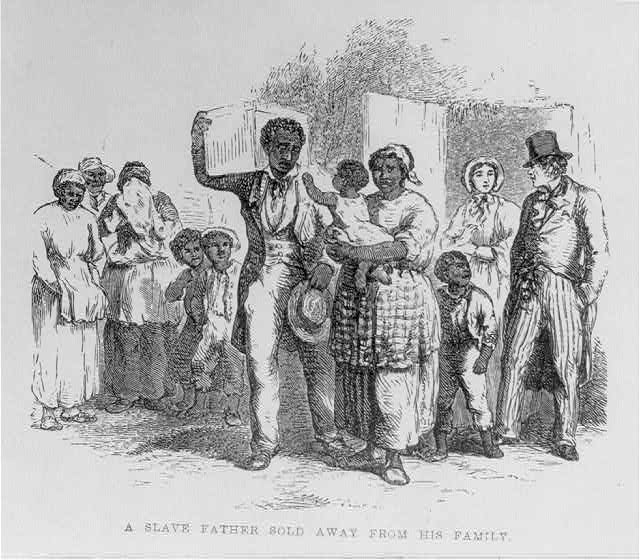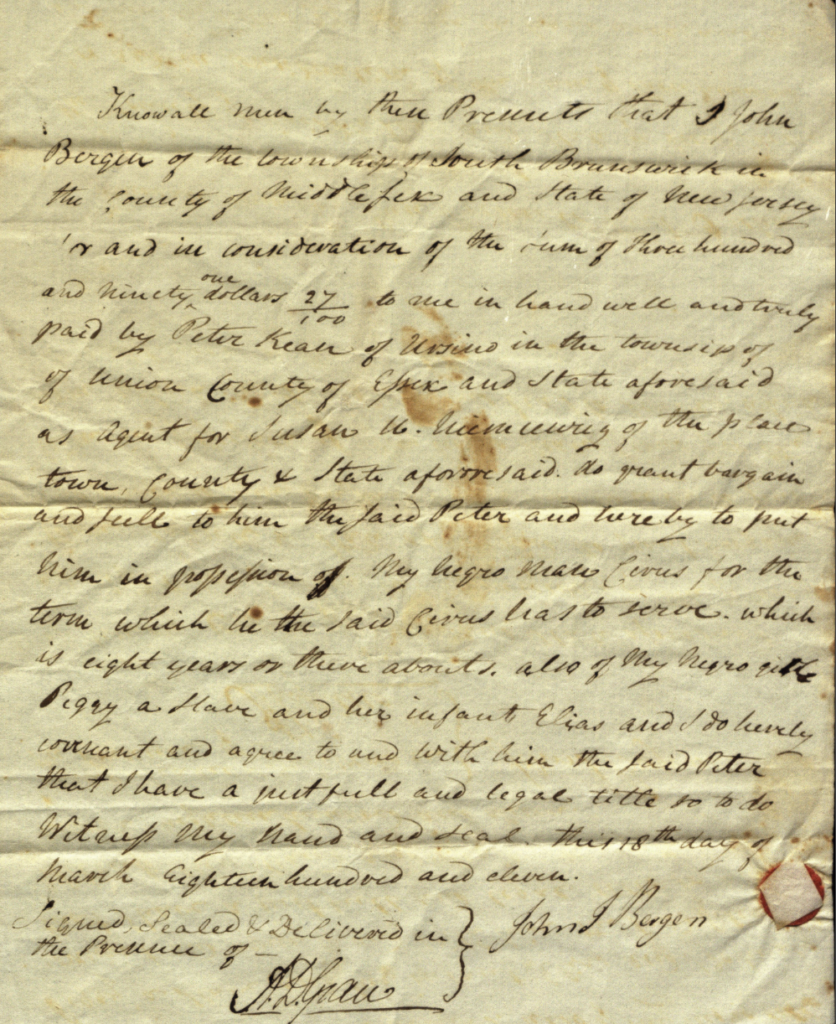In 1811, a married couple, Cirus and Peggy, along with their infant son Elias were sold by John Bergen to Peter Kean, who was acting on behalf of his mother, Susan (Kean) Niemcewicz. Little of their lives has been documented so to get a sense of who they were as people, we have to consider what we can learn from their bill of sale, a document that is in its very nature dehumanizing.
Who was Enslaved at Liberty Hall?: Cirus, Peggy, and Elias
Cirus and Peggy were adults when they were brought to Liberty Hall, meaning that New Jersey’s gradual emancipation law, passed in 1804, did not apply to them. Elias, their son, was only an infant in 1811, so he would eventually gain his freedom after reaching the age of 25 in 1836. Even after gradual emancipation, enslavers tried to claim as much labor as possible from technically free people like Elias. One way they did this was by forging birthdates. Elias’s birth certificate lists his birthday as November 29, 1811, but this cannot be correct since he was sold with his parents the previous March.

Before being sold to Liberty Hall, this family was enslaved in South Brunswick, approximately 40 miles from Union. John Bergen, their enslaver, was a farmer, so they would likely have been made to work in the fields like other enslaved people in the town’s many farms and plantations..
We cannot know the names of the friends and family members that they were forced to leave behind. Even though this small family remained intact, John Bergen’s decision to sell Cirus, Peggy, and Elias still would have broken up many relationships.
During this sale, John Bergen, Peter Kean, and Susan Niemcewicz negotiated the value of three human lives to $391. This was one of the many ways that the institution of slavery was dehumanizing. At the same time, however, enslavers profited from enslaved people’s most human qualities, like their intelligence, skills, and critical thinking skills.
Peter Kean handled the legal aspect of this sale, but it was his mother who claimed ownership over this family. Although we tend to think of white men as primarily responsible for enslavement, white women, especially widows like Susan Niemcewicz claimed ownership of enslaved people in both the North and South. Their gender restricted the ways that they were able to exert control, but white women still had significant power over enslaved people. Even married women who could not legally control property still had an enormous impact on the lives of enslaved people as managers of their households.

According to their bill of sale, Cirus would remain enslaved for eight years before gaining his freedom. Enslavers often agreed to free the people over whom they claimed ownership after a set period of years; this allowed them to make a profit from enslaved while also disentangling themselves from the institution of slavery. Although enslaved people like Cirus eventually gained their freedom, they were unable to use their younger years to build wealth for their own families.
It is unclear what happened to this family after they came to Liberty Hall. Like so many other enslaved people, they disappear from the written record. Cirus would have been free in 1819, but we know nothing about his wife Peggy, who was not promised eventual freedom in this legal document.
Elias was technically free but Niemcewicz was legally entitled to his labor until 1836 if she did not sell him before this date. According to the 1830 Census, there were two free Black men between the ages of 10 and 21 living at Liberty Hall. One of these young men may have been 19-year-old Elias.
